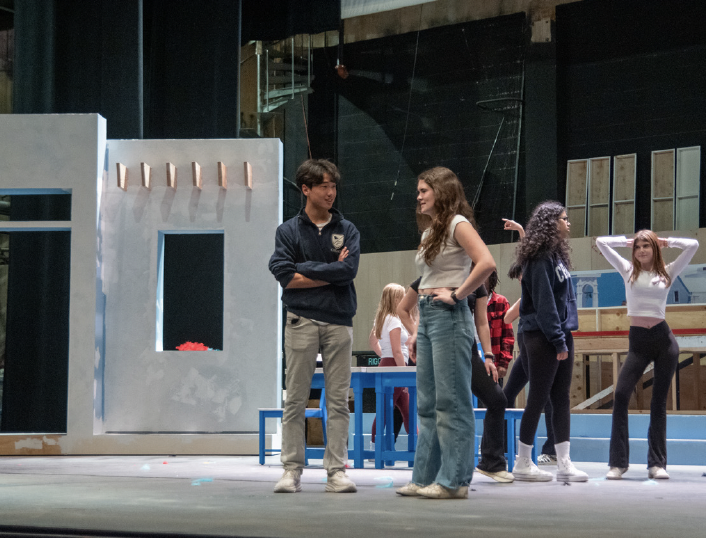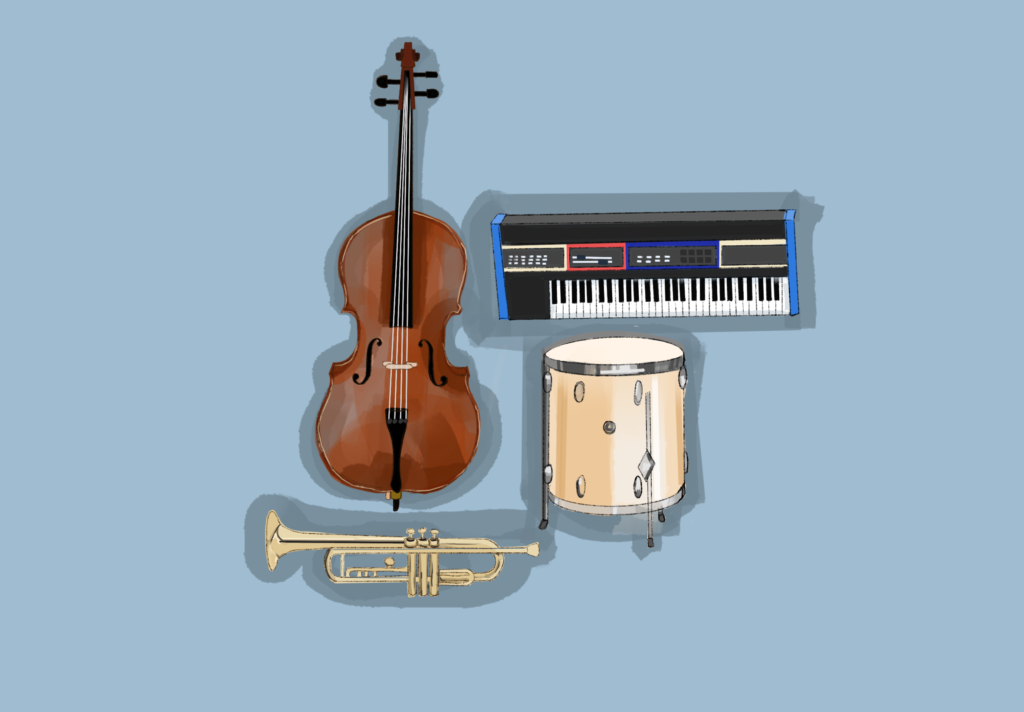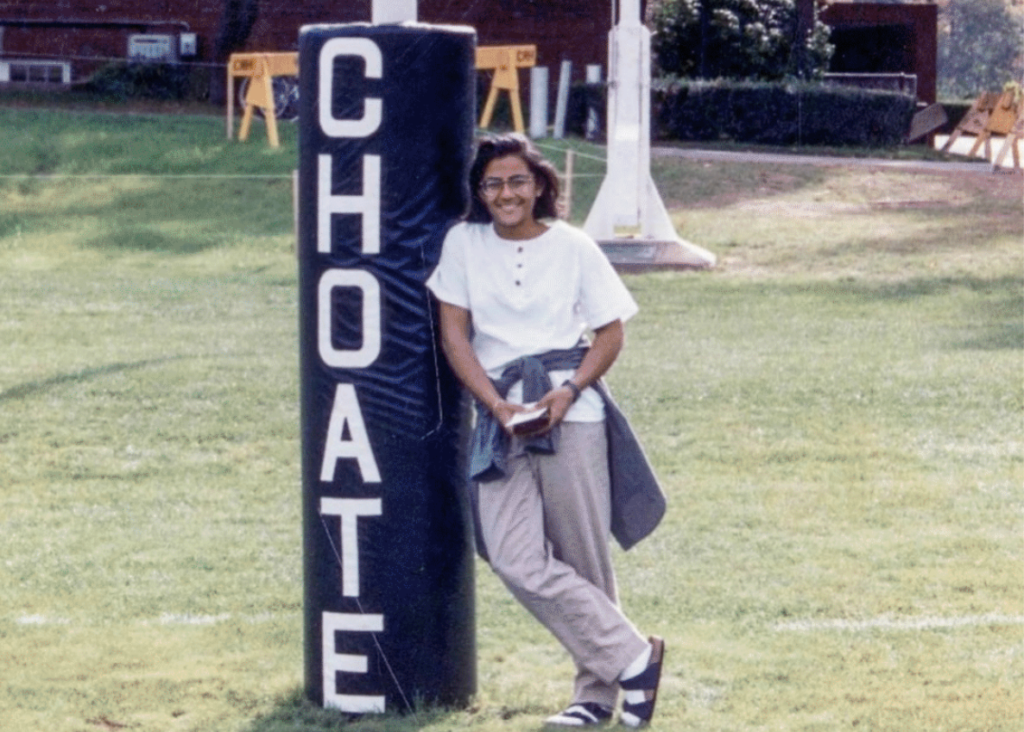
Danny Yoon ’24 and Elsa Franks ’24 rehearse for the spring musical.
Choate’s annual spring musical always features elaborate sets, seamless transitions, and eye-catching costumes. This year, Mamma Mia! will grace the Paul Mellon Arts Center (PMAC) from May 18 to May 20.
While audience members can admire the meticulous details of the set and the actors twirling in their costumes, what happens backstage to make the production possible is often overlooked. Faculty members and students who work on the set design, sound, lighting, and costumes play a crucial role in producing the annual musical.
Typically, a set designer from outside of Choate works in conjunction with the musical’s director, Ms. Deighna DeRiu, to design the set for the play. Then, the design sketches are sent to Technical Director Mr. Mark Gostomski, who plans how the vision can be achieved, down to the minute details. Each show presents its own unique set of challenges and heavy considerations.
At the start of production of Mamma Mia!, Mr. Gostomski asked himself, “How do we create the world of the play, both what’s needed due to the script, and what’s desired by the designer, artist, and director? What’s possible with the capabilities that we have, as well as what’s possible with the timeline?”
After figuring out the logistics, much of the construction of the set is the responsibility of students enrolled in Tech Theater for their afternoon activity. The group is also responsible for aspects of lighting, sound, and costuming.
In addition to a student team for set production, the stage is also managed by a student group. The responsibilities of stage managers include helping actors with positions on stage, coordinating scene changes, and preparing props for a given scene. The role also covers much of the organizational side of the show, from paperwork and emails to taking notes on the production overall.
Justyce Easter-Butcher ’24 started managing last year. “It gets you used to a lot of the things that actually happen if anyone wanted to stage manage out in the world,” said Easter-Butcher. The managers are also available to answer any questions from actors. “We’re their first point of contact before going to anybody else,” said Qin Caldwell ’24, the Head Stage Manager.
Unlike previous years, the live band for the musical will play under the stage in a closed-off room to accomodate the musical’s larger cast. In the past, the musicians were positioned in the pit, which is an area formed by depressing the front part of the stage.
Sound Technician and Assistant Technical Director Mr. Paul Bozzi set up the space and outfitted it with audio equipment. “It’s like designing and building a recording studio,” he said. With 26 lines of audio for the band as well as cameras and displays for the cast and musicians to communicate, Mr. Bozzi’s task was no small feat. He said, “It’s a cool way to present the show because everything goes through the system.”
In the puzzle of production, costuming is another crucial piece. Kinsey Ho ’23 was inspired to join the Mamma Mia! costuming team after being in the cast of the winter show, She Kills Monsters. “The costume crew helped us in and out of the wigs, the costumes, the quick changes,” she said. “I was really impressed with all the stuff that they got done. So that’s what made me want to try it out for myself.”
Jeremiah Olubowale ’25, a member of the costuming team for both Mamma Mia! and past shows, described the process for this production: “I remember, at the beginning of the term, everyone chose a character from the play, and we made a color palette and some ideas for outfits.” Then, the group searched the PMAC costume supply and selected pieces that fit the vision. Once selected, the costumes were adjusted to fit the actor wearing them.
Elsa Franks ’24, who will play Sophie in the show, said, “It’s really important, especially because we’re doing a lot of high activity dancing and singing and moving around. You want to have a costume that works for you.”
The costuming process is also integral to fostering a supportive environment for the cast. Marissa Jacobs ’24, Dance Captain for Mamma Mia! and an actress in past productions, said, “When the costumes are good, and you’re out there, and you’re feeling good about yourself because of what you’re wearing, I just feel like that obviously elevates the energy of everybody on stage.”
The production of Mamma Mia!, like every show, requires an incredible amount of persistence, creativity, and dedication from many groups of people. The result is a show characterized by professionalism and positive energy — an outcome well worth the work.
As is with many other students and faculty involved in Mamma Mia!, the process for Mr. Gostomski is one fueled by passion. “I get to play every day and create things out of who knows what,” he said. “I get to make magic.”




